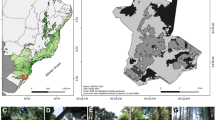Abstract
Several bird species add fresh fragments of plants which are rich in volatile secondary compounds to their nests. It has been suggested, although never tested, that birds use fresh plants to limit the growth of nest microorganisms. On Corsica, blue tits (Cyanistes caeruleus) incorporate fresh fragments of aromatic plants into their nests. These plants do not reduce infestation by nest ectoparasites, but have been shown to improve growth and condition of chicks at fledging. To understand the mechanisms underlying such benefits, we experimentally tested the effects of these plants on the bacteria living on blue tits. Aromatic plants significantly affected the structure of bacterial communities, in particular reducing bacterial richness on nestlings. In addition, in this population where there is a strong association between bacterial density and infestation by blood-sucking Protocalliphora blow fly larvae, these plants reduced bacterial density on the most infested chicks. Aromatic plants had no significant effect on the bacteria living on adult blue tits. This study provides the first evidence that fresh plants brought to the nests by adult birds limit bacterial richness and density on their chicks.


Similar content being viewed by others
References
Banbura J, Perret P, Blondel J, Thomas DW, Cartan-Son M, Lambrechts MM (2004) Effects of Protocalliphora parasites on nestling food composition in Corsican blue tits Parus caeruleus: consequences for nestling performance. Acta Ornithol 39:21–31
Bennett GF, Whitworth TL (1991) Studies on the life-history of some species of Protocalliphora (Diptera, Calliphoridae). Can J Zool 69:2048–2058
Bisson I-A, Marra PP, Burtt EH, Sikaroodi M, Gillevet PM (2007) A molecular comparison of plumage and soil bacteria across biogeographic, ecological, and taxonomic scales. Microb Ecol 54:65–81
Blondel J (1985) Breeding strategies of the blue tit and coal tit (Parus) in mainland and island Mediterranean habitats—a comparison. J Anim Ecol 54:531–556
Blondel J, Maistre M, Perret P, Hurtrez-Boussès S, Lambrechts MM (1998) Is the small clutch size of a Corsican blue tit population optimal? Oecologia 117:80–89
Blondel J, Thomas DW, Charmantier A, Perret P, Bourgault P, Lambrechts MM (2006) A thirty-year study of phenotypic and genetic variation of blue tits in Mediterranean habitat mosaics. Bioscience 56:661–673
Brouwer L, Komdeur J (2004) Green nesting material has a function in mate attraction in the European starling. Anim Behav 53:9–548
Chapuisat M, Oppliger A, Magliano P, Christe P (2007) Wood ants use resin to protect themselves against pathogens. Proc R Soc B Biol Sci 274:2013–2017
Charmantier A, Kruuk LEB, Lambrechts MM (2004) Parasitism reduces the potential for evolution in a wild bird population. Evolution 58:203–206
Clark L, Mason JR (1985) Use of nest material as insecticidal and anti-pathogenic agents by the European starling. Oecologia 67:169–176
Clark L, Mason JR (1988) Effect of biologically active plants used as nest material and the derived benefit to starling nestlings. Oecologia 77:174–180
Clarke KR, Gorley RN (2006) Primer v6: user manual/tutorial. Primer-E, Plymouth
Dawson RD, Hillen KK, Whtiworth TL (2005) Effets of experimental variation in temperature on larval densities of parasitic Protocalliphora (Diptera: Calliphoridae) in nests of tree swallows (Passeriformes: Hirundinidae). Physiol Ecol 34:563–568
Fauth PT, Krementz DG, Hines JE (1991) Ectoparasitsm and the role of green nesting material in the European starling. Oecologia 88:22–29
Gwinner H (1997) The function of green plants in nests of European starlings (Sturnus vulgaris). Behaviour 134:337–351
Gwinner H, Berger S (2005) European starlings: nestling condition, parasites and green nest material during the breeding season. J Ornithol 146:365–371
Gwinner H, Oltrogge M, Trost L, Neienaber U (2000) Green plants in starling nests: effects on nestlings. Anim Behav 30:1–309
Heeb P, Kolliker M, Richner H (2000) Bird-ectoparasite interactions, nest humidity and ectoparasite community structure. Ecology 81:958–968
Hemmes RB, Alvarado A, Hart BL (2002) Use of California bay foliage by wood rats for possible fumigation of nest-borne ectoparasites. Behav Ecol 13:381–385
Huffman MA (2001) Self-medicative behavior in the African great apes: an evolutionary perspective into the origins of human traditional medicine. Bioscience 51:651–661
Hurtrez-Boussès S (1996) Interactions hôte-parasite: le système mésange bleue—Protocalliphora en région méditerrannéenne. PhD thesis, Université de Montpellier 2, Montpellier
Hurtrez-Boussès S, Perret P, Renaud F, Blondel J (1997) High blowfly parasitic loads affect breeding success in a Mediterranean population of blue tits. Oecologia 112:514–517
Hurtrez-Boussès S, Renaud F, Blondel J, Galan MJ (2000) Effects of ectoparasites of young on parents’ behaviour in a Mediterranean population of blue tits. J Avian Biol 31:266–269
Lambrechts MM, Dos Santos A (2000) Aromatic herbs in Corsican blue tit nests: the “potpourri” hypothesis. Acta Oecol 21:175–178
Legendre P, Legendre L (1998) Numerical ecology. Elsevier, Amsterdam
Mennerat A, Perret P, Caro SP, Heeb P, Lambrechts MM (2008) Aromatic plants in blue tit Cyanistes caeruleus nests: no negative effect on blood-sucking Protocalliphora blow fly larvae. J Avian Biol 39:127–132
Mennerat A, Perret P, Bourgault P, Blondel J, Gimenez O, Thomas DW, Heeb P, Lambrechts MM (2009a) Aromatic plants in nests of blue tits: positive effects on nestlings. Anim Behav 77:569–574
Mennerat A, Perret P, Lambrechts MM (2009b) Local individual preferences for nest materials in a passerine bird. PLoS One 4(4):e504
Petit C, Hossaert-Mckey M, Perret P, Blondel J, Lambrechts MM (2002) Blue tits use selected plants and olfaction to maintain an aromatic environment for nestlings. Ecol Lett 5:585–589
Ranjard L, Poly F, Lata J-C, Mougel C, Thioulouse J, Nazaret S (2001) Characterization of bacterial and fungal soil communities by automated ribosomal intergenic spacer analysis fingerprints: biological and methodological variability. Appl Environ Microbiol 67:4479–4487
Rodgers JA, Wenner AS, Schwikert ST (1988) The use and function of green nest material by wood storks. Wilson Bull 100:411–423
Rossi PG, Berti L, Panighi J, Luciani A, Maury J, Muselli A, Serra DD, et al. (2007) Antibacterial action of essential oils from Corsica. J Essent Oil Res 19:176–182
Sherman PW, Hash GA (2001) Why vegetable recipes are not very spicy. Evol Hum Behav 22:147–163
Shutler D, Campbell AA (2007) Experimental addition of greenery reduces flea loads in nests of a non-greenery using species, the tree swallow Tachycineta bicolor. J Avian Biol 38:7–12
Simon A, Thomas D, Blondel J, Perret P, Lambrechts MM (2004) Physiological ecology of Mediterranean blue tits (Parus caeruleus L.): effects of ectoparasites (Protocalliphora spp.) and food abundance on metabolic capacity of nestlings. Physiol Biochem Zool 77:492–501
Simon A, Thomas DW, Speakman JR, Blondel J, Perrer P, Lambrechts MM (2005) Impact of ectoparasitic blowfly larvae (Protocalliphora spp.) on the behavior and energetics of nestling blue tits. J Field Ornithol 76:402–410
Soler JJ, de Neve L, Perez-Contreras T, Soler M, Sorci G (2003) Trade-off between immunocompetence and growth in magpies: an experimental study. Proc R Soc Lond B 270:241–248
Staley JT, Gunsalus RP, Lory S, Perry JJ (2007) Microbial life, 2nd edn. Sinauer, Sunderland
Tschirren B, Richner H (2006) Parasites shape the optimal investment in immunity. Proc R Soc B Biol Sci 273:1773–1777
Wimberger PH (1984) The use of green plant material in bird nests to avoid ectoparasites. Auk 101:615–618
Acknowledgments
This study was partly funded by an ANR research grant to P. Heeb and M. M. Lambrechts (ANR-05 NT05-3_42075). Experiments were performed under the authorisation of the Ministère de l’Environnement et du Développement Durable. Special thanks to P. Bourgault and S. P. Caro for help in the field. We are grateful to T. Boulinier, A. Grégoire, B. Kempenaers, E. Matthysen, P. W. Sherman, A. A. Dhondt and one anonymous referee for helpful comments on an earlier version of the manuscript. To the memory of Don W. Thomas.
Author information
Authors and Affiliations
Corresponding author
Additional information
Communicated by Heli Siitari.
Rights and permissions
About this article
Cite this article
Mennerat, A., Mirleau, P., Blondel, J. et al. Aromatic plants in nests of the blue tit Cyanistes caeruleus protect chicks from bacteria. Oecologia 161, 849–855 (2009). https://doi.org/10.1007/s00442-009-1418-6
Received:
Accepted:
Published:
Issue Date:
DOI: https://doi.org/10.1007/s00442-009-1418-6




